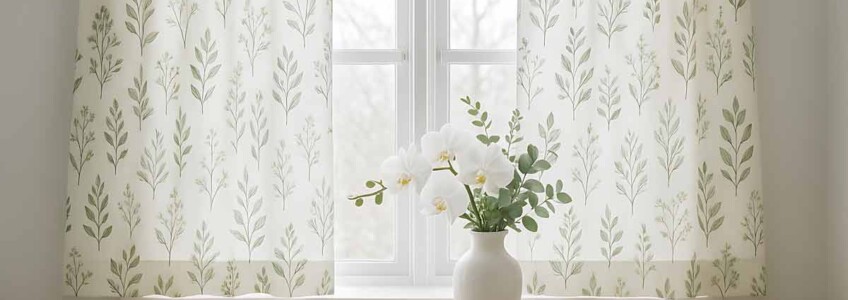Glass curtains are an elegant and discreet solution for decorating small and medium-sized windows, without sacrificing the brightness of the rooms. Perfect in the kitchen, bathroom or living room, they enhance the furnishings lightly and can be easily made even at home, as long as you choose the right fabrics and follow a few technical precautions.
Here are some practical tips on how to sew DIY glass curtains, which fabrics to use and how to obtain an orderly and professional result thanks to the fabrics available in the Cimmino catalogue, specialized in quality curtain fabrics.
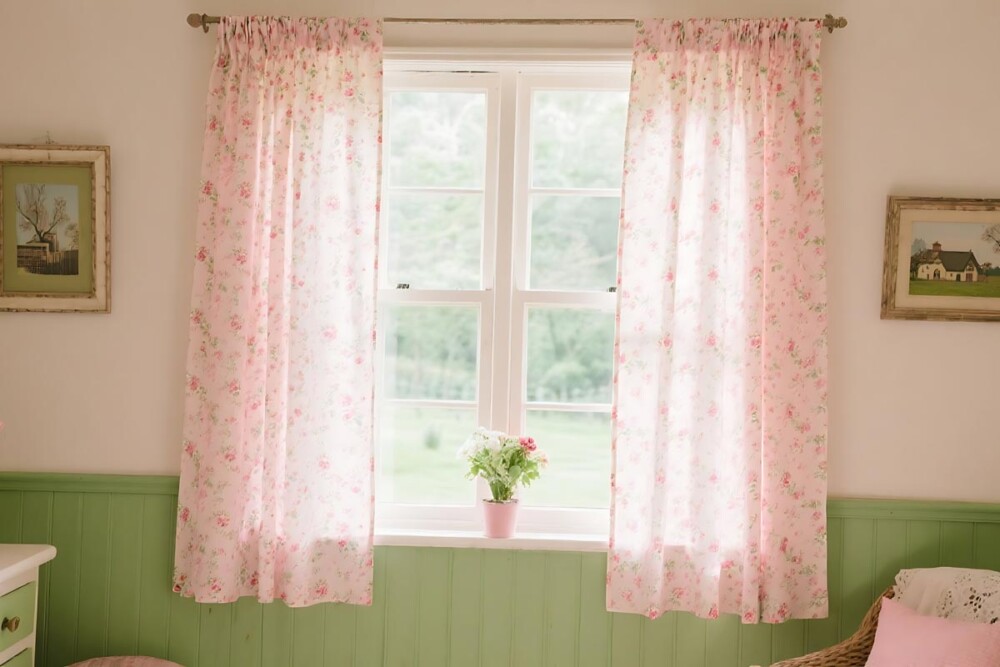
What are glass curtains and why choose them
Glass blinds are draperies that are close to the window glass, attached directly to the frame of the fixture by sticks, velcro, or adhesive supports. They are distinguished from package or panel curtains because they follow the shape of the glass, allowing natural light to pass through but protecting privacy.
Differences between glass, package and panel blinds
Packet curtains slide upwards by folding like an accordion, ideal for modern environments and large windows. Panel blinds, on the other hand, are made up of rigid sheets that slide laterally. Glass curtains are more practical and lighter: they do not require tracks or mechanisms, but only a well-cut and tailor-made fabric.
The aesthetic and functional advantages of glass blinds
In addition to being easy to remove and wash, glass curtains give a well-kept and bright look to the environment. They adapt to different styles, from rustic to contemporary, and can be customized with sartorial details such as loops, borders or tapes.
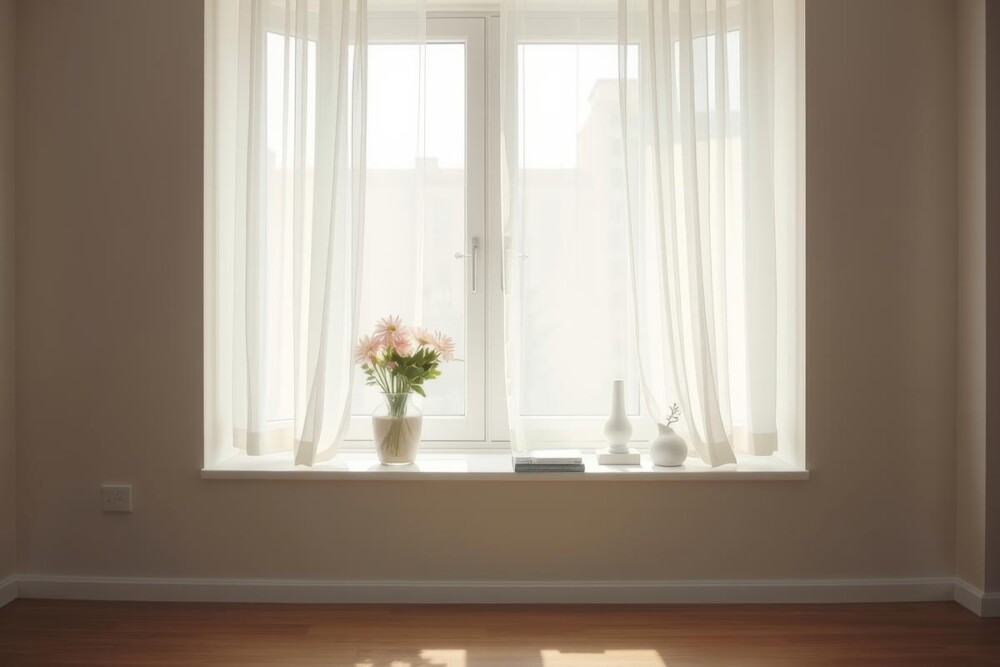
Which fabrics to choose to make glass curtains
The choice of home decor fabric is the most important phase: it influences the aesthetic performance, the amount of light and the durability over time. Cimmino offers a wide range of modern, lightweight curtain fabrics, blackout fabric and technical materials for every need.
Lightweight fabrics: linen, cotton and organza
Linen is perfect for those who want a natural and breathable effect, with its material texture that diffuses light in a warm and soft way.
Cotton, easy to work and washable, is ideal for kitchen curtains or living environments.
Organza, on the other hand, gives a more sophisticated and brilliant effect, suitable for living rooms and bedrooms.
Technical or blackout fabrics
In environments such as the bathroom or rooms exposed to the sun, it is advisable to use fabrics resistant to UV rays or with a darkening effect. Solutions such as fireproof polyester or mixed fabrics with anti-crease treatment ensure practicality and reduced maintenance.
How to match the fabric of glass curtains to the style of decor
For minimal or modern environments, you can choose neutral colors and light textures. In classic or shabby chic contexts, embroidered or floral patterned fabrics create a more decorative effect. The advice is to coordinate glass curtains with the color of the walls or textile accessories, such as tablecloths or cushions.
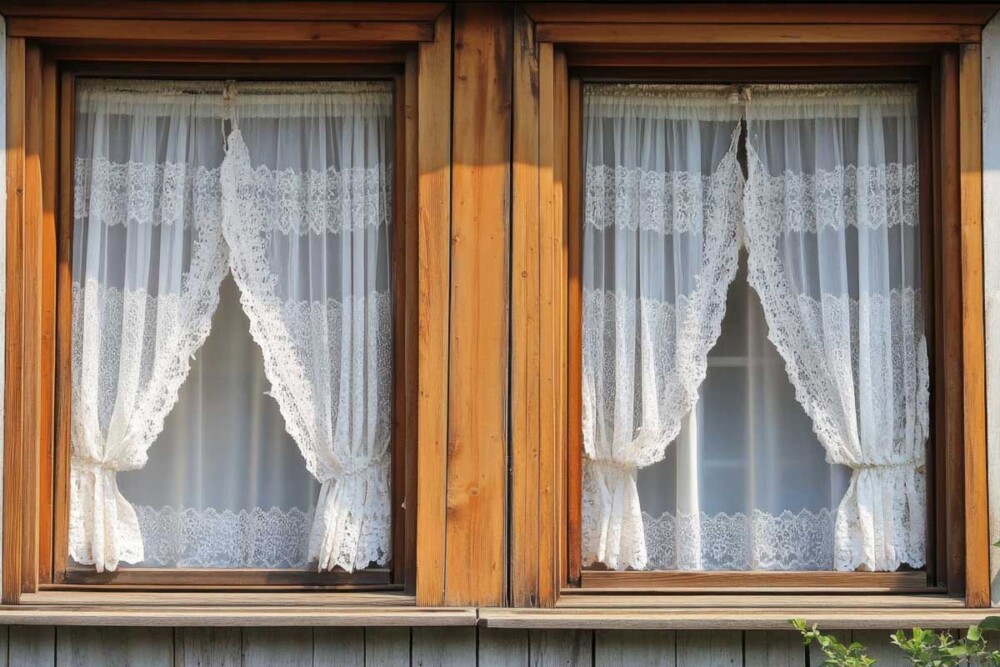
How to sew and assemble DIY glass curtains
Making glass curtains is a simple project even for those with little sewing experience. Accurate measurements, a sewing machine and the right fabric are enough.
Fabric measurements and cutting
For each window, measure the width of the glass and add 2–3 cm for each side, to make the hems. In height, calculate the distance between the two sticks or the frame and add seam allowances. It is important that the curtain adheres well to the glass without being too tight.
Stitching techniques: hem, loops and velcro
The hems must be folded and sewn by machine with a straight or invisible stitch.
If traditional fastening is desired, fabric loops can be made at the top and bottom.
Alternatively, for quicker assembly, you can apply a strip of adhesive or sewn Velcro, ideal for windows where you don’t want to drill the fixtures.
Fixing and mounting systems on fixtures
Curtains can be mounted with pressure sticks, telescopic stands or adhesive clips. In all cases, the fabric must remain tight but easily removable for washing. Cimmino recommends choosing light but resistant materials to avoid sagging over time.
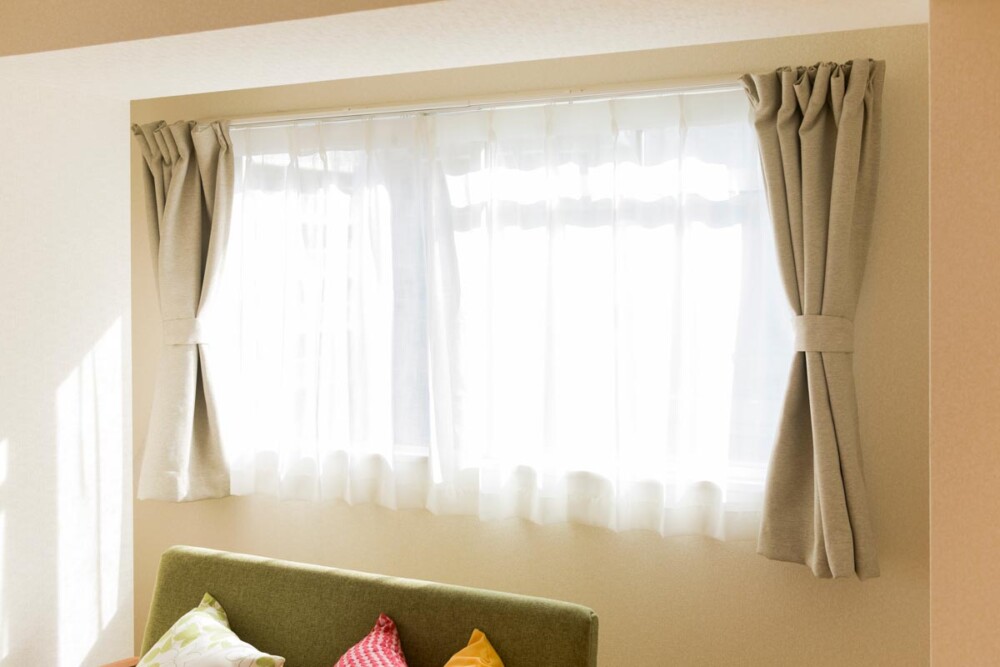
Ideas and advice for original glass curtains
A glass curtain can become a real decorative element, not just a functional accessory. Here are some tips for obtaining truly original curtains.
Embroidery, borders and decorative details
Applying a contrasting border, delicate embroidery or matching taping allows you to customize the curtain. Even a small colored hem or raw linen ribbon can completely change the visual effect of the window.
Trendy colors and textures
Current trends favor natural and warm tones such as linen, sand, sage and ivory. For a modern touch, you can choose flame-effect fabrics or material textures that recall artisanal taste. In brighter contexts, however, semi-transparent curtains in voile or soft tulle always remain a winning choice.
Making DIY glass curtains is a creative and satisfying project, which allows you to personalize any environment with quality fabrics. On the Cimmino shop you can find a vast selection of curtain fabrics, from natural linen to the most elegant organza, to create tailor-made solutions that combine aesthetics and functionality.
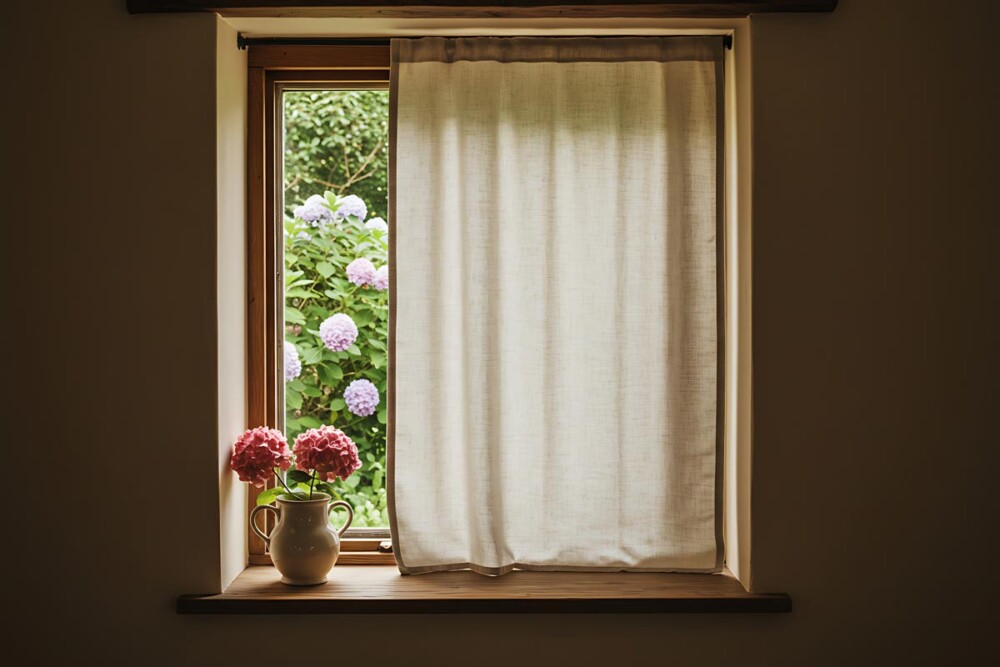
The best fabrics for glass curtains on Cimmino Shop
Choosing the right fabric for glass curtains means finding the balance between aesthetics and functionality. In the Cimmino catalog it is possible to find quality materials designed to enhance every type of environment, from the brightest living rooms to rooms furnished in a sober or natural style. Here are four models that stand out for their composition, visual rendering and versatility of use.
Tenda Linosa
Made of 100% polyester, Tenda Linosa reproduces the effect of natural linen with great realism, but with the practicality of a resistant and easy-to-maintain synthetic fabric. The height of 300 cm and the weight of approximately 110 g/m² guarantee a smooth and light fall, ideal for large windows or glass doors.
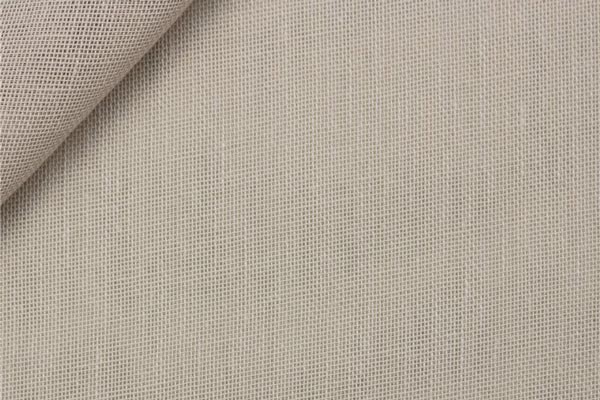
The visual effect is soft and natural, perfect for Scandinavian or minimalist style environments, where light is the protagonist. Available in neutral shades such as white, beige and grey, this fabric allows you to filter light elegantly, without obscuring the interior.
Tenda M/L Mara
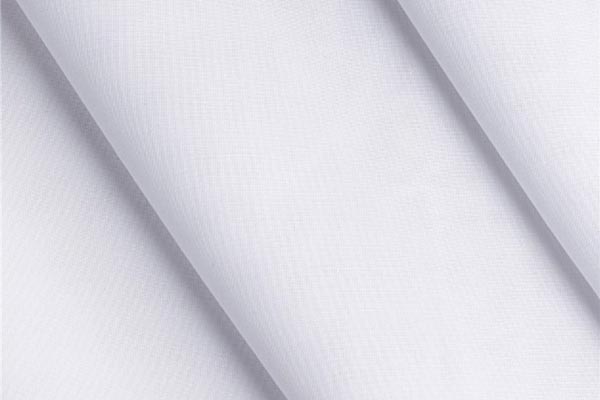
Tenda M/L Mara combines polyester and linen (90% – 10%) in a fabric that combines strength and refinement. With a height of 330 cm, it lends itself perfectly to the creation of glass curtains or long curtains with harmonious draping.
The fine texture and natural texture create an elegant but discreet effect, enhanced by light and neutral tones. Ideal for living rooms or rooms where warm, diffused light is desired, this fabric can also be used for home decor projects or small handcrafted creations, such as bags or textile decorations.
Tenda Maiori
Completely made of polyester, the Tenda Maiori stands out for its united and compact structure, which gives uniformity and brightness to the rooms. With a height of 310 cm and a weight of 148 g/m², it offers an excellent balance between lightness and support, maintaining a regular and orderly fall.
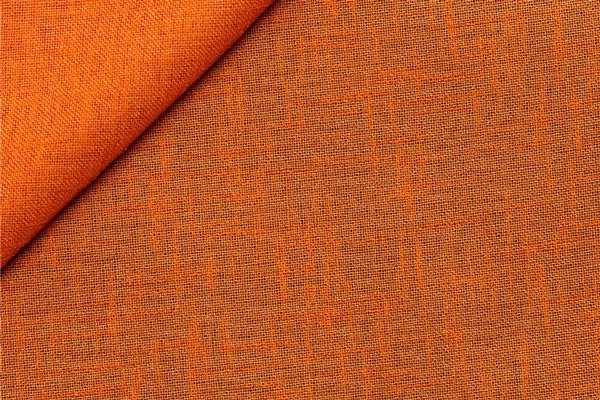
The light colors and neutral shades make it a versatile fabric, suitable for any furnishing style. It is a perfect choice for those who want sober and contemporary glass curtains, capable of furnishing without visually overloading the space.
Tenda Velo Unito
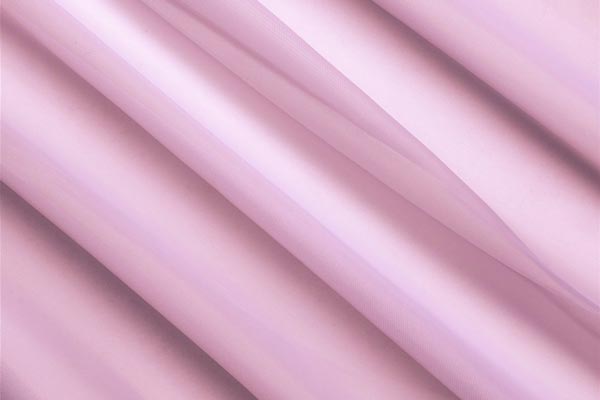
Among the most delicate and luminous solutions, Tenda Velo Unito is a semi-transparent polyester fabric that stands out for its soft feel and fluid fall. With a height of 300 cm and a low weight of 57 g/m², it is perfect for light and impalpable glass curtains.
Due to its versatility, it can also be employed for interior decoration or creative projects such as wedding favors and textile applications. A fabric that gives lightness and airiness to any room.
FAQ – Frequently asked questions about glass curtains
Cotton is ideal: it is washable, resistant and allows a good passage of natural light.
Telescopic sticks or adhesive Velcro can be used, no need for holes.
Simply add approximately 6 cm in width and height compared to the size of the glass, to allow the stitching of the hems.
Better to wash them at low temperature, with a delicate spin and low intensity ironing, especially if in linen or organza.
Milky white, pearl gray and dove gray are neutral and versatile shades that adapt to contemporary styles.



